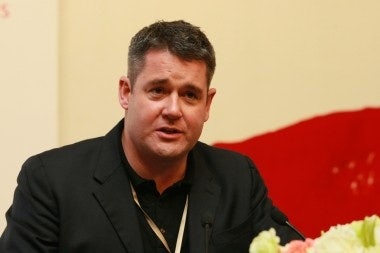Prestige Brands Forum: Mark Ritson on Luxury DNA#

Mark Ritson, associate professor of Marketing at Melbourne Business School
At the Prestige Brands Forum last weekend, Jing Daily attended a panel featuring Mark Ritson, associate professor of Marketing at Melbourne Business School. During the discussion, Ritson provided advice on creating a luxury label, reaffirming the belief that a luxury label should never meet more than 70 percent of demand, at risk of becoming too common. Additionally, Ritson noted that while luxury and status have a strong correlation, they are not the same thing -- an observation also mentioned by Hublot's Jean-Claude Biver. Ritson explained that while status can be conveyed through marketing and spin, craftsmanship, quality, and elegance are what truly make luxury, luxury.
During the panel discussion, Jing Daily asked Ritson whether or not he sees a need for brands to localize in the China market, such as we have seen in the case of Hermès' Chinese sub-brand Shang Xia. Both Ritson and Hublot's Jean-Claude Biver replied that everyone in the luxury industry is watching Hermès very closely, as their experiment with Shang Xia will become a valuable case study. Ritson went on to say that localization and nationalism may not be as strong a factor as companies may think, as a fascination and exoticism with the Western world is equally strong. China is a completely new market, Ritson added, pointing out that as people are only now being exposed to luxury labels and products, there is a large demand and plenty of room for expansion. Transcription and original audio recordings by Jing Daily team.
On how to appeal to luxury tastes:#
Mark Ritson:
[It] depends on the brand DNA. So in the case of Chanel or Hermes their DNA is - the client comes to me, so what that means is I am the same if I am in Shenzhen or Shanghai or Tokyo or Paris, my look is the same because that is the style of the brand.
Other brands, let’s take Hennessy [for example]. Hennessy’s DNA is about respecting different cultures, different people, and Hennessy is different in different countries. In America, we see [that a] very good-looking African-American man drinks Hennessy. In France, we see very distinguished Frenchmen drinking Hennessy and in Shanghai, we would see very funky, cool people drinking Hennessy. And in each place, the brand plays a different game because its DNA is flexible. Which is why many people think Hennessy is maybe one of the greatest luxury brands, because it’s successful in different places but in different ways, so it’s much richer.
If a luxury brand should have flexibility in the Chinese market, what kind of factors should we pay the most attention to?#
Ritson:
So first, reflect the tastes of the people. So in the case of Hennessy, we don’t drink from the Snifter, we drink straight up, with ice cubes, Asian style, so we'd design more offerings around that because that’s the way they drink it.
But also, we can make different styles sometimes. The Chinese customer is coming to luxury new, so they still like [an] extravagant image, a big statement, whereas in Europe it’s quiet right now because of the recession. China is more successful, so many of the brands are more bold when they come to China: bigger logo, bigger image, because people love that.
How do you explain the difference in pricing of luxury goods in China and abroad?#
Ritson:
Yeah, it’s different. Frankly, there’s more demand for limited numbers in China so the brand can charge more because there’s a limited number and a huge demand in China. That’s the first reason.
The main reason is just currency. You have to remember the price is set up to a year or a year and a half before you see the [item] in the store. What happens is the prices are set and then the euro goes down or the dollar goes up, and often what you’re seeing is just the strength of the Chinese economy and the weakness of foreign economies.
The general rule, it’s not always true, but the general rule is that the further you go from the maison, where the brand is centered, the more expensive the products are. So it’s the same in Australia, the prices, of course, are much higher because you go further away from the home country.
How do you balance tradition with innovation?#
Ritson: You don’t, basically. Good point. It’s a paradox. We have history and tradition, and we have creativity and new things. And that’s the secret of the luxury brand. You are buying 300 years of history and you’re buying what’s going to be cool next season.
Well, you have to keep breaking things and remaking them. So you know, Louis Vuitton went from making trunks to speedy bags, to handbags, to watches, to jewelry. Tag-Heuer went from making watches, to mobile phones, to USBs. You keep challenging yourself to make new products but [stay] true to the DNA.
Visit our previous posts on the Prestige Brands Forum: Q&A with Jean-Claude Biver, CEO and Chairman of Hublot, Part One and Part Two.